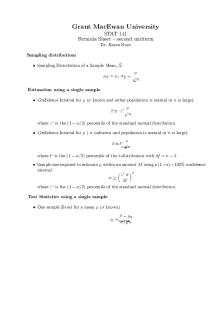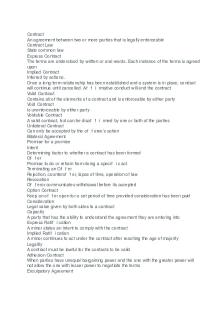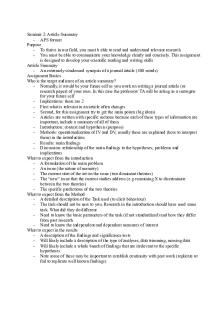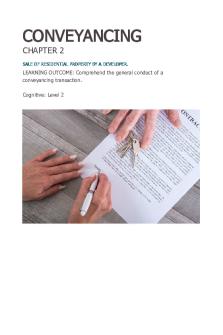Psychopharmacology - Lecture notes 2 PDF

| Title | Psychopharmacology - Lecture notes 2 |
|---|---|
| Author | Carly Doyle |
| Course | Nursing Care of Psychiatric Clients |
| Institution | Texas A&M University-Corpus Christi |
| Pages | 21 |
| File Size | 531.1 KB |
| File Type | |
| Total Downloads | 46 |
| Total Views | 149 |
Summary
Prof Hernandez Psych lecture notes (gray) and tutoring notes (pink) combined...
Description
Psychopharmacology
Helpful Tips
Know both generic and trade name The purpose is to learn neurotransmitters and understanding how they work to understand MOA and the side effects
Nursing Role: Overview
Assessment Coordination of care o Close attention to comorbidities o Close attention to acute physical issues Decision making Education Consents for psychoactive S/E and interactions Documentation Reporting
Varied Presentations
Fluctuating moods o Not able to “self-regulate” Psychoses Inappropriate behaviors Cognitive impairments
Assessment & Coordination
Thorough BL assessment Ongoing assessment and eval Noninvasive before invasive o Therapeutic use of self o Incr of decr activity and/or stim o Distraction** o Environmental manipulation o Many other nursing interventions employed before medicating
Maslow’s Hierarchy
1
Position on the hierarchy changes according to circumstances Characteristics of the self-actualized person- accurate perception of reality, ability to accept oneself, others and human nature, spontaneity, able to focus and concentrate to problem solve, need for privacy or boundaries, autonomy, range of emotional reaction, freq of peak or spiritual experiences that validate the beauty and goodness of life, satisfying relationships, ethical, nonconforming, creative Take care of lower needs before higher needs ae fulfilled On every test
Tx Medical Problems Determine if there are comorbs that may masquerade as a psych problem
Infection Pain Elimination prob Electrolyte imbalance* Injury Mineral/Vitamin Deficiencies S/E and interactions Toxicities Psychosocial/Environmental
Limbic System
Involved in regulating emotional behavior, memory, and learning Involved with aggression, submissiveness, sexual behavior and pleasure, memory and learning Associated with mood, motivation, and preservation Kluver-Bucy: occurs when entire limbic system malfunctions o S/S: fearless and placidity (absence of emotional reactions); inordinate degree of attention to sensory stimulation (ceaseless curiosity); visual agnosia (inability to recognize anything) Know this* “emotional part of the brain”
Basic Neurotransmitters
2
Dopamine Norepi Serotonin GABA
Acetylcholine
Reuptake: reabsorption and stored for use or broken down by enzymes
Monoamines 1.
2.
3.
Dopamine a. Effects: involved in fine muscle movement, integration of emotions and thoughts, decision making, stimulates hypothalamus to release hormones (sex, thyroid, adrenal), affects social behavior and mood, sleep pattern, appetite, and digestion b. Decrease: Parkinson’s and depression c. Increase: Schizophrenia and mania Norepi “adrenaline” a. Effects: affects mood, attention and arousal, “fight or flight” in response to stress, jitteriness b. Decrease: Depression c. Increase: Mania, anxiety, schizo d. Think of energy Serotonin a. Effects: sleep, regulation, hunger, mood, pain perception, hormonal activity, aggression and sexual behaviors, regulates bowel b. Decrease: depression c. 90% of serotonin is in our gut d. Can cause migraines if too much and ED. Why? Bc incr levels cause blood vessels to constrict = impact on blood clotting e. Exercise and diet can help incr serotonin
Amino Acids
GABA o o o
Effects: reduces aggression, excitation, anxiety, pain perception, can impair cognition and psychomotor functioning, calms nervous anxiety Decrease: anxiety disorders, schizo, mania, Huntington’s disease Increase: reduction of anxiety
Classification of Drugs
Antianxiety/Anxiolytics (benzos and non-benzos) Antidepressants (SSRIs, SNRIs, Tricyclics, MAOIs, Atypical antidepressants) Mood stabilizers/Anticonvulsants Antipsychotics (Typical aka 1st gen and atypical aka 2nd gen)
Psychopharmacology, Intro
3
Routine and prn meds Know potential and assess for o S/E o Interactions
o Withdrawal sx Some impact the physical status May be non-reversible (TD) and/or (NMS)
Goal:
Least med Max level of functioning Benefits > risks
Neuroleptic Malignant Syndrome (NMS)
Potentially fatal* S/E: fever, tachycardia, swearing, muscle rigidity, tremor, incontinence, stupor, leukocytosis, renal failure More common with high potency drugs and in dehydrated patients Action: D/D all drugs* hydrate, renal dialysis, ventilation and fever reduction as appropriate
Tardive Dyskinesia* look at the picture on slides
Late onset, can be yrs Freq irreversible Thrusting tongue Facial grimacing Lip smacking
Noncompliance
Complex, costly regimens S/E Lack of immediate efficacy Lack of understanding benefits/risks Lack of support Frustration with system and response OR
Feels no need for medication o Common in adolescents No benefit (i.e. costs > benefits)
Antidepressant- Indications
4
Depression Anxiety Panic PTSD (Know the difference of PTSD [secondary to trauma/reliving those moments] vs “just thinking about it)
o Heightened anxiety 24/7 ADD/ADHD o Difficulty focusing and maintaining relationships Eating and Sleeping DO Enuresis Pain Many other uses
These meds can take up to 4-6 weeks to work; until then those pts are at higher risk to kill themselves d/t boost of energy
Antidepressants Block reuptake and norepi and/or serotonin, and regulate the areas of the brain that manufacture them
Antidepressant MOA Type
MOA
Tricyclic
Block reuptake of serotonin and norepi
SSRI
Inhibit reuptake of serotonin and norepi-selective
NRI/NDRI
Norepi and dopamine reuptake inhib
MAOI
Monoamine oxidase inhib
Atypical
NaSSA: a2-adrenergic receptor antagonist
Tricyclics Medications
Clomipramine (Anafranil) Amitriptyline (Elavil) Doxepine (Sinequan) Imipramine (Tofranil) Nortriptyline (Pamelor) Amoxapine (Asedin)
MOA: Blocks the reuptake on serotonin and norepi thus incr serotonin and norepi levels in the synapse Indications: Major depression, OCD (Anafranil), panic disorder SE**
5
A1 Blocking- Sympathetic Response o Tachycardia o Dry mouth o Urinary retention
Anticholinergic Response** o Tachycardia o Dry mouth (a lot of dry mouth) o Urinary retention o Hallucination o Confusion Toxicity- 3 C’s o Coma o Convulsions o Cardio toxicity Increased appetite Impaired sexual functioning Fight or flight effects Blurred vision Orthostatic hypotension Wgt gain Constipation Sensitivity to light Drowsiness/weakness Nausea
Nursing Considerations
Monitor suicide assessment carefully (all antidepressants) Monitor blood levels for therapeutic doses Monitor ECG for cardiotox (unintentional sodium channel blocking effect causes reduced conduction velocity in the heart) Anticholinergic response: chew sugar free gum & take frequent sips of water to relieve symptoms and this will subside with time Causes a prolonged QT interval Can cause ventricular dysrhythmias
SSRIs** Medications
6
Fluoxetine (Prozac) Sertraline (Zoloft) Venlafaxine (Effexor) Escitalopram (Lexapro) Fluvoxamine (Luvox CR)
Paroxetine (Paxil) o High energy level associated with it Citalopram (Celexa)
MOA: Blocks the reuptake of serotonin thus incr serotonin Indications:
Major depression Anxiety: GAD, PTSD, panic disorder, and social phobia
GI distress o Most common** o N/V/D EPS o Abnormal muscular activity Dysphagia o Serious SE- give benztropine 3 S’s: stomach, sexual dysfunction, and social phobia Insomnia Appetite changes Dry mouth Headache
SE
Nursing Considerations for SSRIs
Shouldn’t be combines with other serotonin drugs d/t the possibility of the drug rxn called serotonin syndrome Monitor for cytochrome P-450 inhib bc SSRI can lead to tox. Cyto P-450 is an isozyme responsible for biotransformation of several drugs Pregnant women should take antidepressants with caution d/t possible birth defects (Paxil) Pt needs to be closely monitored for SIHI within 2-4 wks d/t incr energy and motive to commit suicide GI distress is common and will subside with time These meds take 4-6 wks to work
Serotonin Syndrome
7
Incr stimulation of the CNS and peri serotonin receptors bc of the excess serotonin in body Characteristic symptoms:
High fever Confusion Hypomania Tachycardia Diaphoresis Discoordination Seizures
Mydriasis = dilate* Miotic = constrict* Clonus: muscular spam*
SNRIs Drugs
8
Duloxetine (Cymbalta)
Nefazodone (Serzone) Venlafaxine (Effexor) Desvenlafaxine (Pristiq)
MOA: Blocks reabsorption of both serotonin and norepi this increases serotonin and norepi SE
N/V Constipation Anxiety Abnormal vision; diplopia and blurred vision Abnormal dreams Trouble sleeping Agitation Dizziness Sweating HA Insomnia Dry mouth Tremor Gas Sleepiness Yawning Sexual dysfunction
Atypicals Medications
Bupropion (Wellbutrin) o Best to get in the morning when they have trouble getting started Mirtazapine (Remeron) Trazadone (Desyrel) Duloxetine (Cymbalta)
MOA: Norepi and dope reuptake inhib thus incr the two Indications: Depression SE
9
Wgt changes* o Gain- Remeron o Loss- Wellbutrin; if you’re losing weight, you’re doing well EPS o Abnormal muscular activity Sedation/Hyperactivity o All, but less with Wellbutrin Give during day to prevent insomnia (except Desyrel) Hyperactivity Seizures (Wellbutrin)
Sedation (Desyrel)
Nursing Consideration
No alcohol bc it will cause sedative effects Wellbutrin side effects include seizures and sedation, but they will subside with time Desyrel should be given at night d/t sedation Abnorm muscular activity: immediately report to MD to replace prescription Common side effect of Remeron is wgt gain: teach pt the importance of healthy lifestyle such as eating healthy and exercising to maintain healthy wgt
MAOIs** Medications
Phenelzine (Nardil) Isocarboxazid (Marplan) Tranylcypromine (Parnate) Rarely use: Ensam o Less risk of hypertensive crisis
MOA: Decr metabolism of serotonin, norepi, and dope thus increasing them Indications: Major depression, panic disorder, bulimia SE
Dizziness Tachycardia Risk of Hypertensive Crisis* Intracerebral hemorrhage Muscle twitching Stomach upset Trembling Constipation Incr sweating and appetite Decr urine Dry mouth Blurred vision
Special Considerations
10
Parnate Diet o Avoid tyramine (aged, smoked, fermented, pickled, fish, soy, red wine, beans, MSG, etc.) o Tyramine free diet: preservative free foods Wash-out Period o Varied time between start and stop of this and other psychotropics (dependent on half-lives) Don’t take CNS suppressant, EPI, OTC cold meds, antihistamines, and nasal decongestants (causes HTN crisis) ** Monitor BP Avoid alcohol Can also cause serotonin syndrome
Don’t give at night = insomnia
Like really know this slide. Also know what meds should be taken in moderation with MAOIs
MAOIs Cont. Decr metabolism of norepi and serotonin
HTN Crisis
BP > 180/200 Liver can’t break down tyramine = incr tyramine = tyramine causes vasoconstriction = incr BP o Ordinarily, MAO-A would destroy the excess norepi. When MAO-A is inhibited, though, norepi levels get too high leading to dangerously high BP 1st sign: sudden and severe headache followed by neck stiffness, N/V, and tachycardia Pts need to change their diet to limit or avoid foods that contain tyramine
There is a problem with inhibiting MAO. The liver uses these enzymes to degrade monoamine substances that enter the body from food. One monoamine, tyramine, is present in most protein-based foods. If the liver cannot break down tyramine, then extreme vasoconstriction could occur.
Foods that Contain Tyramine
11
Liver** Fermented substances (alcoholic beverages and aged cheese) ** Ketchup/mustard Aged and cured meats** Improperly stored or spoiled meat Banana peel Broad bean pods Sauerkraut Soy sauce Draft beer Avocados** Bananas Beef or chicken liver** Brewer yeast Caffeine (coffee, tea, chocolate) Eggplant Figs Meat extracts and tenderizers Overripe fruit Papaya Pickled herring Raisins Red wine, beer, sherry Sausage, bologna, pepperoni, salami Sour cream
Yogurt
Anything meant to last a long time/aged/fermented/pickled*
Antidepressant SE Anxiety Agitation Restlessness Irritability* Hostility Impulsivity Mania* Sleep change Eating change Paxil and Prozac have pushed people into mania d/t the wrong dx Skin change (hypersentivity to sun) Dry mouth Urinary retention Blurred vision* Constipation Memory problem Confusion Concentration Libido decr Tachycardia* N/V Twitching Incr depression and suicidality as medication begins to work, but is not yet full effective, why? Incr energy = incr means to carry out SIHI
Anxiolytics- Indications for Use
Depression Anxiety Agitation Restlessness Panic PTSD ADD/ADHD Etc
“QU” rule; if there’s a Q there’s a U, if there’s depression there’s typically anxiety
Benzodiazepines Potentiate (enhances) Gamma-aminobutyric acid (GABA)
Inhibitory agent—keeps things under control** Too little and things are excelled; Too much and things are reduced
Anxiolytics Class Benzodiazepines
12
Medications Alprazolam (Xanax) Lorazepam (Ativan) Diazepam (Valium)
Clonazepam (Klonopin) MOA: Potentiates GABA (which decr firing rate of neurons at the synaptic space) results in decr anxiety thus incr GABA Indications: Anxiety SE: Drowsiness /sedation Constipation Ataxia (loss of full control of body movements)/dizziness Feelings of detachment Rebound insomnia/anxiety Incr irritability/hostility Dependency and tolerance Nursing Considerations for Benzos Use caution when using machinery/driving Teach pt to avoid all alcohol and CNS depressants Discontinue by gradually tapering dose to avoid withdrawal effects Not recommended during pregnancy or pregnancy Monitor for addiction Take meds with meals to decr nausea Flumazenil (Romazicon) is used for benzo overdose* Monitor for falls (especially in elderly) **HIGH POTENTIAL FOR ABUSE/ADDICTION d/t euphoric feeling** Don’t give to people with existing addiction Buspirone (Buspar) Buspar is typically long term o Antianxiety agent with no addictive potential o NOT a CNS depressant/sedative o Several weeks are required for effectiveness to begin o Most effective with patient’s that haven’t been patient’s that haven’t been prescribed a Benzo o SE: dizziness and insomnia
Atypical
Antihistamines
Diphenhydramine (Benadryl) Can also be used as a mood stabilizer
SE
Dizziness Drowsiness Sedation Unsteady Dryness Slurred speech o If pulled over, appears drunk o Know how your body responds to meds before going to work, driving, etc Constipation SE usually decr with use o Alert: may precipitate agitation
Addictive
13
Must be tapered Avoid withdrawal
No alcohol or CNS depressants (potentiates)**
Can lead to coma or other serious complications
Non-Benzos
Buspirone (Buspar)** Propranolol (Inderal) o Beta-blocker with an off-label use for anxiety o Helps with symptoms of anxiety (tremors, palpitations, tachycardia, and sweating) Clonidine (Catapres)* o Antihypertensive o Off label use for anxiety o Blocks physiological symptoms of opioid withdrawal, tachycardia, and excessive salivation Pregabalin (Lyrica) o Anticonvulsant o Off label use for anxiety o Acts by binding to calcium channels resulting in the neurons decr reactivity to stimulation. (basically, you are calming down the firing of neurons)
Hypnotics- Indications for Use Insomnia Medications
Zolpidem (Ambien) o Sleep paralysis Zaleplon (Sonata) Trazadone (Desyrel) Temazepam (Restoril)
Excessive sleepiness Sedation Falls Confusion Disinhibitions Dreams Priapism
SE
Antipsychotics (Typical AKA 1st gen and Atypical AKA 2nd gen) Indications
14
Psychosis Mood instability Bipolar DO
Schizo
Works by blocking dopamine from the receptor site Psychotic/Mood Instability First Generation: has more EPS (extrapyramidal symptoms) than 2nd gen Indications: positive symptoms of schizo and psychosis, works on delusions MOA: Block dopamine from receptor site; helps improve positive symptoms of schizo thus decr dope Nursing Considerations Monitor for Abnorm mvt and immediately report to MD AIMS exam will be used routinely to monitor for muscle control Monitor for EPS Monitor for fever, tachycardia, sweating, and muscle rigidity; could indicate NMS (check VS including temp)
Chlorpromazine (Thorazine) Thioridazine (Mellaril) Trifluoperazine (Stelazine) Haloperidol (Haldol) Perphenazine (Trilifon) Fluphenazine (Prolixin) Loxipine (Loxitane) Pimozide (Orap) Molindone (Moban)
Second Generation Works on negatives MOA: Block dopamine from receptor site = decr dope Indications: Positive and negative signs of schizo, psychosis Additional SE: incr serum prolactin (Risperidone), mildmod QT interval (Geodon requires frequent ECGs), and incr appetite = wgt gain = incr lipid levels = high sugar levels Nursing Considerations 2nd gen is often chosen and 1st line Clozapine can cause Agranulocytosis (decr WBC). Can also cause: seizures, myocarditis, akathisia, and SJ Syndrome
Clozapine (Clozaril) Risperidone (Risperdal) Quetiapine (Seroquel) Olanzapine (Zyprexa) Ziprasidone (Geodon) Aripiprazole (Abilify)—two-fer with manic
Know the usages**
Wgt gain associated with 1st and 2nd gen
Antipsychotic SE Sedation (1st) Tremors Blurred vision Hyperlipidemi a (2nd)
15
Nausea Rigidity Retention Metabolic syndrome
Constipation Shuffling Photosensitivity Agranulocytosis (decr of WBC) Sudden fever, chills, sore throat, wkness, Weekly WBC monitoring Incr RF inf Teach pt to report flulike symptoms
Wgt gain (both) Tics Tardive dyskinesia Hypothermia
Restlessness Dry Mouth Hyperglycemia (2nd) Neuroleptic malignant syndrome (rare, potentially fatal) (1st)
Positive symptoms- added symptoms Negative symptoms- symptoms that are taken back, kind of repressed Question example: someone presents with diabetes type 2, what med are they ...
Similar Free PDFs

Psychopharmacology - Lecture notes 2
- 21 Pages

Lecture notes, lecture 2
- 3 Pages

2 - Lecture notes 2
- 5 Pages

Lecture notes, lecture Chapter 2
- 11 Pages

Lecture notes, lecture formula 2
- 1 Pages

2 Biodiversity - Lecture notes 2
- 33 Pages

Chapter 2 - Lecture notes 2
- 30 Pages

Blaw 2 - Lecture notes 2
- 4 Pages

Chapter 2 - Lecture notes 2
- 4 Pages

Seminar 2 - Lecture notes 2
- 2 Pages
Popular Institutions
- Tinajero National High School - Annex
- Politeknik Caltex Riau
- Yokohama City University
- SGT University
- University of Al-Qadisiyah
- Divine Word College of Vigan
- Techniek College Rotterdam
- Universidade de Santiago
- Universiti Teknologi MARA Cawangan Johor Kampus Pasir Gudang
- Poltekkes Kemenkes Yogyakarta
- Baguio City National High School
- Colegio san marcos
- preparatoria uno
- Centro de Bachillerato Tecnológico Industrial y de Servicios No. 107
- Dalian Maritime University
- Quang Trung Secondary School
- Colegio Tecnológico en Informática
- Corporación Regional de Educación Superior
- Grupo CEDVA
- Dar Al Uloom University
- Centro de Estudios Preuniversitarios de la Universidad Nacional de Ingeniería
- 上智大学
- Aakash International School, Nuna Majara
- San Felipe Neri Catholic School
- Kang Chiao International School - New Taipei City
- Misamis Occidental National High School
- Institución Educativa Escuela Normal Juan Ladrilleros
- Kolehiyo ng Pantukan
- Batanes State College
- Instituto Continental
- Sekolah Menengah Kejuruan Kesehatan Kaltara (Tarakan)
- Colegio de La Inmaculada Concepcion - Cebu





